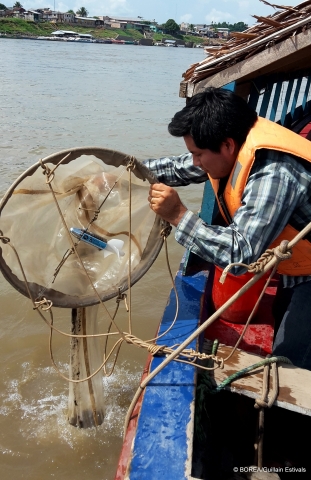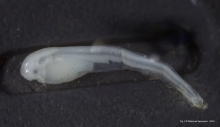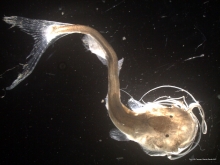
DNA Metabarcoding of Amazonian Ichthyoplankton Swarms. M. E. Maggia, Y. Vigouroux, J. F. Renno, F. Duponchelle, E. Desmarais, J. Nunez, C. Garcia-Davila, F. M. Carvajal-Vallejos, E. Paradis, J. F. Martin, C. Mariac (2017).
PLoS ONE 12(1): e0170009. doi:10.1371/ journal.pone.0170009
Tropical rainforests harbor extraordinary biodiversity. The Amazon basin is thought to hold 30% of all river fish species in the world. Information about the ecology, reproduction, and recruitment of most species is still lacking, thus hampering fisheries management and successful conservation strategies. One of the key understudied issues in the study of population dynamics is recruitment. Fish larval ecology in tropical biomes is still in its infancy owing to identification difficulties.
Molecular techniques are very promising tools for the identification of larvae at the species level. However, one of their limits is obtaining individual sequences with large samples of larvae. To facilitate this task, we developed a new method based on the massive parallel sequencing capability of next generation sequencing (NGS) coupled with hybridization capture. We focused on the mitochondrial marker cytochrome oxidase I (COI). The results obtained using the new method were compared with individual larval sequencing. We validated the ability of the method to identify Amazonian catfish larvae at the species level and to estimate the relative abundance of species in batches of larvae. Finally, we applied the method and provided evidence for strong temporal variation in reproductive activity of catfish species in the Ucayali River in the Peruvian Amazon. This new time and cost effective method enables the acquisition of large datasets, paving the way for a finer understanding of reproductive dynamics and recruitment patterns of tropical fish species, with major implications for fisheries management and conservation.
BOREA Contacts : Jean-François Renno, IRD Research director, jean-francois.renno@ird.fr and Fabrice Duponchelle, IRD Researcher, fabrice.duponchelle@ird.fr

From egg to larva and alevin, DNA metabarcoding allows specific and massive identification in Amazonian ichthyoplankton swarms. © Mileniusz Spanowicz - WCS except photo 4 (low, right) : Carmen Garcia Davila IIAP.




